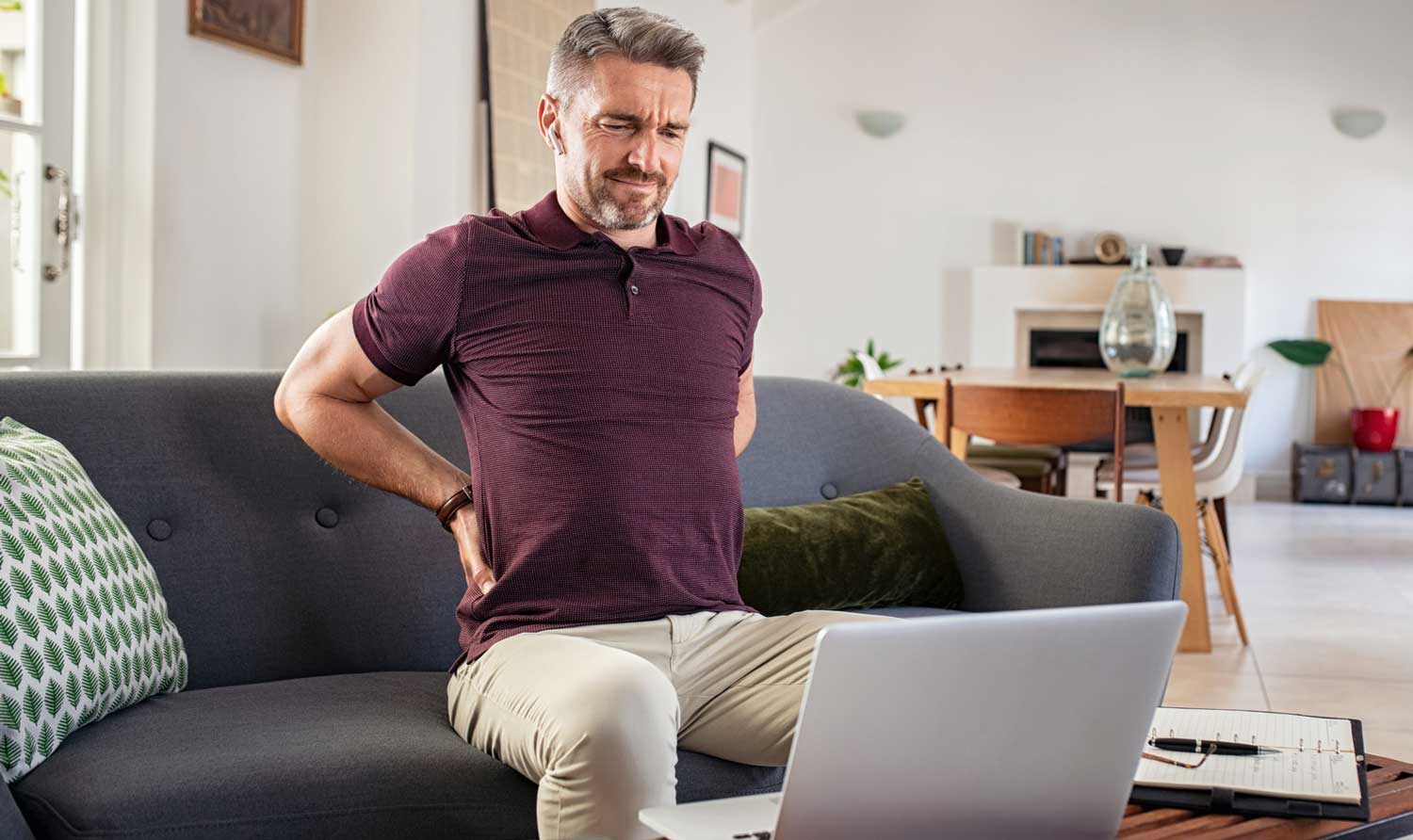Does Exercise Help Back Pain?

It’s no secret that back pain has become a serious problem in America.
Cases in point: a study out of UNC found that 80 percent of Americans suffer from low-back pain. According to The American Chiropractic Association, we spend $50 billion per year on costs related to back pain. Moreover, a survey conducted by the American Physical Therapy Association found that three out of four of us resort to pain medication to relieve their backaches.

Although these findings are staggering, the solution might be simpler than you’d think. When it comes to relieving aches, or better yet, preventing symptoms from arising in the first place, exercise might be just the thing to help back pain.
But there’s a catch: It can’t just be any random series of exercises you find on the Internet or an activity that your friend swears by; it needs to the right type for your condition. “There is no-one-size-fits-all solution,” says Frank Musumeci, PT, the Biomechanical and Musculoskeletal Director at Pritikin Longevity Center. “If you’re doing the right exercises, that’s not only safe, but it can be therapeutic. If you try 10 different exercises without an understanding of the structural reason for the back pain, then it’s just a matter of luck.”
Musumeci points to lower-back pain as the most common complaint plaguing his Pritikin clientele. (The runners-up? Knee and rotator cuff pathologies.)
But he adds that back pain can vary significantly in cause and severity. “You can have your basic muscle strain. The next step becomes disc injuries, bulging discs and herniated discs, which is more of an issue in younger people. Then there’s degenerative disc disease, which is more of a player at age 60-plus, and that also groups into stenosis. One of the most severe back issues is spondylolisthesis.”
So how do you know what type of exercise can help your back pain? Start with these back-friendly tips from Musumeci.
1. Understand the goals of exercise for the back-pain sufferer.
Musumeci highlights four major objectives:
- Increased core strength. “We would like all of our back-pain sufferers to strengthen the core. You want to have good pelvic alignment, you want to exercise the core to help achieve a neutral spine, i.e., a spine that doesn’t have exaggerated curves, like lordosis (sway back) and kyphosis (forward head/rounded shoulders).” An exercise that might help: “The gold standard is a supine posterior pelvic tilt. It’s considered safe for every diagnosis. You can do anywhere, even on your bed.”
- Stronger scapula muscles. “Strengthening the scapula muscles is important. Stabilizing exercises can be particularly helpful for those with kyphosis.” Musumeci likes Seated Rows and Reverse Flies for scapula strengthening. “Our resistance machine at Pritikin even has a pad to protect your back.”
- More flexibility. Increasing flexibility leads to greater range of motion, which decreases stress on your low back. “If a person has really tight hips and a weak core, for example, we need to loosen the hips to help decrease pain. At Pritikin, we have a program that teaches self-stretching and also features assisted stretching.” Some recommended stretches: hamstring stretching, knee-to-chest stretches and hip rotation.
- Enhanced glute strength. “Glute strength is an important part of an increased functional movement capacity,” Musumeci explains. Exercises like prone bilateral leg raises might help to achieve this goal.
2. Consult a qualified professional.
Or should we say professionals. “When we’re dealing with someone with pain, they should be in the medical lane first. At Pritikin, we have a tiered team approach, which means we try to determine the actual cause of the pain, and then a physical therapist sets up the parameters and we coordinate with our exercise physiologists. Everyone brings something different to the table and communicates.”
In fact, Musumeci says that Espel implemented a program that helps clients identify issues in their bodies. “We do a functional movement analysis. We screen individuals to determine which professional they should see.
3. Certain types of exercise might help back pain.
Have a lot of hypermobility—or instability—in your body? “Yoga might be better because it focuses more on strengthening the core and posture,” which are essential to managing and preventing back pain.
On the other hand, “if a person is hypomobile, meaning they are very stiff, the goal is to increase flexibility, since stiffness puts more torsion on the back,” Musumeci explains. “These individuals usually do well with yoga.”
When it comes to weight training, it’s important to tread carefully. “It depends on the stage of your back pain. There’s a time not to lift (say for someone with an acute chronic herniated disc in their neck), but the ultimate goal is to get back to it.”
4. Consider everyday activities as a possible source of back/neck pain.
“My belief is that the ergonomics and body mechanics of everyday life—everything from how you brush your teeth, to how you drive, to how you sit at a computer, to how you sleep—should be a priority. That’s actually just as important as exercise.
“If you’re a person with chronic neck pain and you sit in forward head posture and get muscle spasms, then you need to adjust your workstation to a neutral spine. If you’re waking up with pain, but didn’t go to sleep with pain, then you need to look at the way in which you sleep. Side sleeping with a pillow between the knees and the knees/hips bent is usually best, because it helps to decrease pressure on the low discs.”
Experience back hurt while driving or afterward? “Driving ergonomic aids, such as those from Relax the Back, can be very helpful.”
5. Sometimes less is more.
When it comes to exercise to help back pain, “I have to make exercise choices for lower risk, more moderate reward,” Musumeci says. “It’s about choosing moderate exercises that offer the highest gain. You have to know how to let pain be your guide.”
Work with Frank Musumeci at the Pritikin Center
Frank Musumeci, the Biomechanical and Musculoskeletal Director at Pritikin since 2004, has been helping a wide range of clients, from professional athletes to seniors, rehabilitate from the full gamut of injuries, back pain included. His approach is methodical and individualized, placing focus on educating the client at hand and giving them the tools to succeed. It’s no surprise that Pritikin guests consider Frank, and the customized exercise programs he provides, a key part of their journey to health. If you’re suffering from back pain or any other orthopedic limitation, booking a session with Frank at the Center will prove invaluable.
